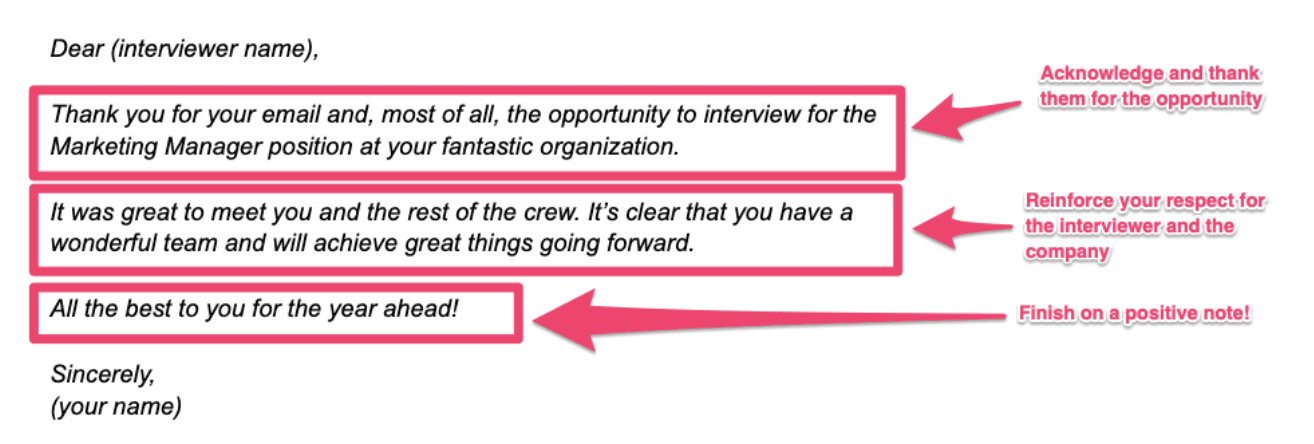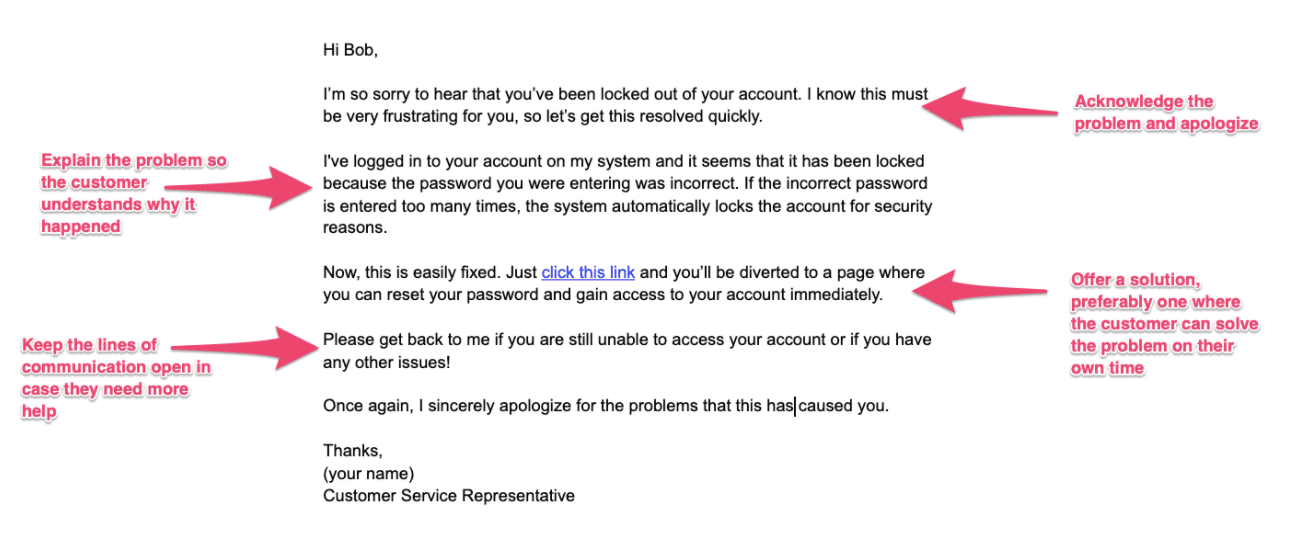If you’ve got an email that feels like it’s been sitting there forever… and it continues to sit… and sit… and sit—you’re not alone.
We spend 28% of our office time in our email, and when we are supposed to be logged off—40% of us stillcheck work emails at least five times a day! No matter how much time we spend in our inboxes, we still have emails that are left sitting unanswered.
But here’s the schtick: just how should we answer those emails that tend to get left for last?
If you’re running a business, you need to figure it out—pronto. Roughly a third of companies never end up responding to emails from customers, which is bad news because 91% of customers get frustrated if they have to contact a company about an issue more than once.
Here’s the good news. Figuring out a structured way to respond to tricky emails as soon as they land in your inbox means they won’t just sit… and sit… and sit. In this piece, we’re going to break down:
How to answer an email interview invitation
How to answer a rejection email
How to answer a thank you email
How to answer questions in an email
How to answer a customer complaint email
Let’s plow through that inbox (and perhaps even hit Inbox Zero!)
5 suggestions for how to answer an email
1. How to answer an email interview invitation
Let’s get to the first email you might have sitting in your inbox—an unanswered interview invitation.
If you are dealing with one of these emails, it’s probably because you’ve applied for a job. If that’s the case, it’s best to get back to the ASAP, ideally with a healthy dose of enthusiasm and optimism. Keep it simple and stick to a structure that ticks all the boxes:
✅ Start off by saying thank you!
✅ Be clear about whether or not you’re still interested in the position and sitting for the interview
✅ If you are still interested, offer up some spaces on your calendar that are free or ask them when they would have time to talk
✅ Stay optimistic yet professional
✅ Give the email a once over before you hit send to check for grammar, typos, and words that should be left out of emails for fluff reasons
If you stick to this structure, you should end up with something like this:
Hello (interviewer’s name),
Thank you so much for looking at my application and for considering me for the position. I would love to take you up on your offer of an interview.
I have (available time) and (available time) free on my calendar, so please let me know if either of those work for you? Or, if you have a preferred time you can talk, just let me know and I can make space on my schedule.
Additionally, if you need anything further from me before our interview, such as information or other references, I will gladly get them to you before we talk.
Sincerely,
(your name)
The response is only three paragraphs, but it ticks three boxes:
✅ Shows appreciation for the interviewer considering your application
✅ Accepts the interview and offers available time slots in your calendar
✅ Asks if they need any other information before you talk
Addressing these three points will cut down on the back-and-forth of emails and will get the interview locked into your calendar easier.
2. How to answer a rejection email
You went for a job interview. You thought it went well. But instead of getting a job offer—this lands in your inbox:
Good morning (your name),
Thank you very much for taking the time to interview for the position we had available for a Marketing Manager on our team.
As we said in the interview, we were interviewing a slew of candidates and, after serious consideration, we have decided to pursue the application process with another candidate.
I would like to sincerely thank you for your wonderful application and for considering our company.
We wish you the best of luck on your job search!
Ouch.
However much the burn hurts, it’s important to gather your thoughts and write a reply. Fortune 500 HR guru Liz Ryan says although it’s not necessary or expected for unsuccessful job candidates to reply to rejection letters, there’s no downside to being polite.
She recommends a reply that’s short and sweet, like this:

Ryan says even after replying politely to the job rejection, you can follow the recruiter on Twitter or keep tabs on job openings on their website in case another opportunity pops up in the future.
Pro tip: If you want to lift the hood on why you didn’t get the job role—ask! Companies are often open to giving constructive feedback during the interview process even when you aren’t successful. Ask the recruiter if they can give you any feedback on your application or interview when you reply. However, if you go down this path, do it respectfully and in a way that doesn’t come across like you’re questioning the reason why you weren’t successful in your application.
3. How to answer a thank you email
When somebody sends you a thank you email, it’s a nice gesture—but how should you reply?
Thank you emails happen all the time. You’ll get them from your co-workers, your boss, your clients, and even your family and friends. And even though these types of emails are quite common, you still need to answer them out of respect.
Once again, having a structure when replying to a thank you email is a great idea. The “must-have” parts of a thank you email should be:
👋 Acknowledging the person who sent the email by name—and saying thank you back
🥪 Create a “thank you” sandwich: acknowledge that what you did was worth the thank you note (bread), explain why it was worthwhile (filling), and then reinforce that your relationship will continue in the future (bread)
😃 Keep it positive—and short
Piece all of those elements together, and you should end up with an email reply that looks like this:
Hello (email sender’s first name),
Thank you for your lovely email.
It was such a thrill to work on this project with you. I really enjoyed watching all of our hard work pay off and the product launching successfully.
I’m now looking forward to working together again so we can achieve the same success together.
Hear from you soon!
Sincerely,
(Your name)
As with all emails, try to respond as quickly as you can (we know, we know… you are busy.) If you are super strapped for time, just take the template above, switch out the placeholders for names, and hit send—the sooner the better.
4. How to answer questions in an email
Questions in emails are common, and we all have our different ways of answering them.
The number one message we want to tell you (erm… shout from the rooftops!) is that if you reply to these types of emails by saying “see my answers in red below,” you need a new approach. Firstly, formatting doesn’t always carry across on email servers, and secondly, you have no idea whether or not the receiver is colorblind.
Front-end web developer Roger Johansson suggests two ways to avoid your email answers getting caught up in structure and formatting problems:
Always reply inline and use a blank line to separate your answers from each question
Don’t assume that the recipient will see any formatting
Let’s start off with point #1—separating your answers with a blank line.
Using this tactic does two things: it shows that you have read and replied to every question, and it stops the recipient from having to scroll down to their original message. Johansson suggests quote the original message and insert your answers like this:

In response to point #2, Johansson says you should be really careful about assuming any formatting you use will show up the same on your recipient’s email.
“There are plenty of people who, either by preference or because of technical circumstances, will not see any HTML/Rich text formatting you make in your message,” he says.
“So relying on font size, font weight or font color is a bad idea.
“In other words, do not start your response by writing something like “Hi. You can find my answers in red text below.”
However, if you follow the advice and answer questions by quoting the original message and inserting your answers underneath—you solve both problems in one hit 👊
5. How to answer a customer complaint email
Nobody… nobody… likes getting customer complaints in their inbox. Yet the only thing worse if you leave them sitting there unanswered.
Here’s a typical example of a customer complaint that may look familiar:
Hi there,
I can’t get into my account. I’ve been trying to log in and it keeps saying my account is locked. This is the third time this has happened to me and it’s so frustrating.
I really need to log in today. Can you fix it ASAP, please?
Bob
Once again, I recommend replying in a structured way to these types of emails. Creating a framework to handle customer complaints will take the guesswork out of your replies and give you the ammunition to be able to respond quickly when one lands in your inbox.
Every reply should involve four steps:
Listening to the complaint and acknowledging the customer’s pain
Admitting the mistake and apologizing
Focusing on resolving the problem and offering solutions
Making sure that the customer’s complaint is fully resolved and asking if they need more help
In the earlier example, Bob was locked out of his account. Here’s how you could respond:

Structuring your reply like this means you cover all bases. It acknowledges the problem, explains why it happened, and offers a resolution that the customer can use to solve the issue quickly.
Pro tip: If your inbox is overflowing with customer complaints, you could try sharing the load with the rest of your team. A shared inbox allows your customer service team to collaborate and answer queries as soon as they hit the inbox, cutting the time a customer has to wait for a reply. Even better, if you need help writing a reply to a customer, shared inboxes allow you to tag another team member and ask for their input before hitting send.
Using Front, you can create shared inboxes to handle complaints, answer questions, and nurture customers so they feel like they’re being heard.
How to answer any email
Answering tough emails is like ripping off a band-aid…. The longer you leave them, the harder they are to deal with.
That’s why when an email lands in your inbox, whether it’s a customer complaint or a job rejection, the best way to address it is to tackle it head-on. Craft a reply that addresses the issue, stays positive and most of all—is sent promptly.
The thing about replying to emails is that you have the chance to turn a conversation around. If a customer is unhappy about your product or service, the way you reply to them can flip the switch and leave them feeling heard. If your job application gets rejected, your reply could determine if the recruiter keeps your CV on file and calls you up next time there’s a vacancy.
So, when an email lands in your inbox—think promptly, reply quickly.
If you’re looking for more good email copy, we’ve even got a resource for that. It’s aptly called Good Email Copy.
Written by Kimberlee Meier
Originally Published: 20 November 2020











